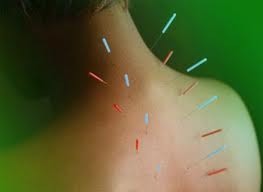ACUPUNCTURE
How It Works:
The ancient Chinese practice of acupuncture provides pain relief and/or treats illness when tiny needles are inserted at specific points on the body that correspond to internal organs. There are two theories on how the microscopic needles work. The first is the Eastern belief that the human body’s life force, or chi, circulates along imaginary lines, or meridians, which run through the body. Disease and injury interrupt this force, and the needles are said to release blocked energy and restore balance. The second theory, the one most Western medical doctors subscribe to, is that the needles stimulate the release of endorphins, which effectively block pain. The barely perceptible pricks may also activate the hypothalamus, the part of the brain that controls pain signals.

What the Research Says:
Dozen of studies have documented the effectiveness of acupuncture as a treatment for pain stemming from tennis elbow, muscle sprains and chronic lower back and soft-tissue injuries. In the United States, some 5,000 medical doctors have training in acupuncture. In 1997, even the normally conservative National Institutes of Health issued a statement concluding that acupuncture can help treat injuries such as those listed above. Two other Western techniques derived from acupuncture – transcutaneous electrical nerve stimulation (TENS) and percutaneous electrical nerve stimulation (PENS) – are known to offer similar relief. For TENS, electrodes that send out tiny electric impulses are placed on the skin. These impulses zap the nerve endings that lie just beneath the skin. This blocks pain by providing the brain with an alternative stimulus. During PENS, the electric impulses are delivered via needles that actually pierce the skin but act the same way.
What an Athlete Says:
“The effect is instant,” says Susanne Martineau, a triathlete who competes for the USA Triathlon National Team and trains five hours a day, six days a week. Acupuncture, she says, relieves the muscular pain and tightness that frequently bother her neck and shoulders.
Skeptic's Corner:
“There’s some research that says it might be useful for pain management, but it depends on the pain,” says Stephen Barrett, M.D. , founder of Quackwatch, a consumer protection organization based in Allentown, Pennsylvania, that scrutinizes dozens of alternative treatments (for more information, check out www. quackwatch. com). “In sports there’s always the question of whether pain is going to restrict what you do. Is it even good to relieve pain if it leads to getting unnecessarily reinjured? You may need an exercise program to protect yourself from reinjury. You may need rest. You may need to change your training routine. You’re certainly not going to get that advice from an acupuncturist.” Also, be sure your acupuncturist uses disposable needles. “Cases of hepatitis and HIV infection have been associated with the use of inadequately sterilized reusable needles,” cautions Adriane Fugh-Berman, M.D., chair of the National Women’s Health Network.
Cost:
$35-$125 per session (treatment can take from 15 to 60 minutes).
Contact Us
13710 Olive Boulevard (Primary Office)
Chesterfield, MO 63017
Telephone: 314-469-PAIN (7246)
Fax: 314-469-7251
Exchange: 314-441-6965 (for after-hour Emergencies Only)
Hours:
Monday thru Friday
8:30 AM – 4:30 PM

